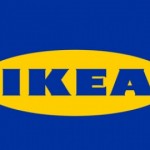Posts Tagged ‘Retail’

John Lewis Porter’s Five Forces Analysis. The level of competitive environment in Chinese market of department stores is best analysed with the application of Porter’s five forces model which specifies five individual forces that form the competitive environment in a marketplace. The level of existing competition is intense in Chinese department store market with the largest market share divided between such companies as Lane Crawford, Lotte Mart, Maoye International, Mitsuokoshi, and New World Department Store China Limited. Barriers to entry into the market. Chinese government has continually relaxed rules and regulations for starting businesses during the last several decades (Han et al., 2011), which has resulted in barriers for entering department store business lowered. Customer bargaining power is high in Chinese department store market. This is caused by the high level of competition in the marketplace. Threat of substitute products and services in China in relation to John Lewis department store is highly limited and this situation increases the level of attractiveness of the market. Supplier bargaining power. Interestingly, “in China, the bargaining power of suppliers was once very large due to the shortages and the planned price system” (Zhuang et al., 2003, p.40). However, as the principles of free market economy are increasingly being adopted in China, supplier bargaining power is diminishing. References Han, J., Liu, R. & Zhang, J. (2011) “Globalisation and Wage Inequality: Evidence from Urban China” Zhuang, G., Herndon, N.C. & Zhou, J.N. (2003) “The Transforming Structure of Cometition in China’s Retail Industry” Journal of Marketing Channels, Vol. 11(1)

John Lewis Partnership plc is UK partnership company that owns 37 John Lewis department stores, and 277 Waitrose supermarkets across the UK and a set of other businesses. The partnership employs 81,000 permanent staff that is referred to as Partners, who contribute to the annual gross sales of over £8.7 billion (About Us, 2012, online). Dedicated to the vision of its founder John Spedan Lewis ‘to create a company dedicated to the happiness of the staff through their worthwhile and satisfying employment in a successful business, John Lewis has been able to provide all its Partners with 18% bonus on their share profit for the financial year of 2010/2011 at a total cost of £194.5m. (Annual Reports and Account, 2011) It is important to note that “John Lewis’s strategy is remarkably clear and straightforward: partners should gain satisfaction from their works and status; customers should be recruited for the long term and profit is essential to enable growth and returns to all” (Isles, 2010, p.120). This strategy has enabled the company to charge customers premium prices for products and services it offers. John Lewis Environmental Trends Analysis The necessity for John Lewis to engage in international market expansion is justified by following factors and environmental trends: 1. Retail market saturation in UK. Retail market in UK is becoming highly saturated (Perrey and Spillecke, 2011) and this situation makes long-term growth prospects for John Lewis in local market obscure. Therefore, engagement in international market expansion is an appropriate strategy to be adopted by senior level management in current situation. 2. Attractive opportunities in Chine market. China is being perceived by many as a rapidly emerging superpower. Moreover, it has been estimated that “sales of luxury goods in the country reached 212 billion yuan in 2010 and probably grew 25 to…

Founded in 1943 by Ingvar Kamprad, IKEA generated the sales of 23.1 billion Euros in 2010 through its operations in more than 38 different countries with 27 distribution centres. The IKEA Group has 280 stores in 26 countries and the remaining of the stores are run by franchisees (Berger, 2011). The business concept of IKEA involves selling high volume of mostly furniture products in low prices. Moreover, “with an aim of lowering prices across its entire offering by an average of 2% to 3% each year, its signature feature is the flat packed product that customers assemble at home, thus reducing transportation costs” (Profile:IKEA, 2011, online) The vision of the company reflects this strategy in an effective manner. “The IKEA vision is to create a better everyday life for many people. We make this possible by offering a wide range of well-designed, functional home furnishing products at prices so low that as many people as possible will be able to afford them” (Inter Ikea Systems B.V, 2011, online). As one of the leading retailers in a global scale IKEA is engaged in systematic environmental monitoring and analysis which serves to be an effective source of information for decision-making. Internal benchmarking is one of the main methods of environmental monitoring and analysis engaged in by IKEA. Benchmarking is “method of improving business performance by learning from other companies how to do things better in order to be the ‘best in the class’”(Janakiraman & Gopal, 2007, p.181). The Internal benchmarking practice engaged in by IKEA involves comparing different divisions and subsidiaries of the company and thus establishing the best practice and aspiring to it for the remaining divisions and subsidiaries of the company. Moreover, IKEA is engaged in extensive market research both in global and local levels that is conducted by marketers…
The third largest supermarket in UK, J Sainsbury plc (Sainsbury’s) has been founded in 1869, and currently has 890 stores that consist of 547 supermarkets and 343 convenience stores. The company has 150,000 employees and serves more than 19 million customers a week (Company Overview, 2011, online). Sainsbury’s operates mainly in three segments (J Sainsbury’s plc, 2011, online): supermarket and convenience retailing; Sainsbury’s Bank joint venture financial services; Property investment through British Land joint venture and Land Securities joint venture. Sainsbury’s has a range of stakeholders to deal with. A stakeholder can be defined as “someone who has invested money into something, or has some important connection with it” (Chorley et al, 2008, p.2). According to Kozami (2002) stakeholders can be divided into two categories: internal and external. An internal stakeholder for the company is someone who works for the company and therefore is interested in various aspects of the business. External stakeholder, on the other hand, is someone who is interested in the performance and other aspects of the business, even though the individual does not work for the company. Sainsbury’s internal stakeholders include shareholders of the company, managers at all levels and other employees of the company. External stakeholders of Sainsbury’s, on the other hand, include customers of the company, its numerous suppliers, and the local communities, as well as governments Sainsbury’s operates in. At has also to be mentioned that Sainsbury’s internal stakeholders can be external stakeholder of the company at the same time. For example, Sainsbury’s employees who also happen to be local residents are the type of individual who are internal and external stakeholders at the same time. Effectiveness of Sainsbury’s Communication Strategy Sainsbury’s communication strategy comprises most of the elements of popular communication strategy that include advertisement, letters, newsletters, oral communication, company magazine, formal…

The future geographical presence strategy of Lidl includes expansions into the new markets such as Brazil, Mexico, Russia and USA. This is an effective market expansion strategy that promises to increase Lidl’s global presence, and at the same time boost the revenues of the company significantly. However, further recommendations related to international market expansion can be made for Lidl, that if implemented would contribute to achieving global aims and objectives of the company. Specifically, Lidl should also enter into Chinese and Indian markets as well, because the great number of potential customers living in these countries may ensure the greater level of profitability compared to the markets of Brazil, Mexico, Russia and USA. If the amount of financial resources possessed by Lidl allows the expansion to all of the above named countries than the relevant plans should be devised and implemented. However, if the choice needs to be done between Brazil, Mexico and Russia in one hand, and India and China on the other hand, in terms of international expansion, the preference should be given to the latter group of countries due to the following reasons: Firstly, the total amount of population living in China and India exceed several times the total amount of population living in Brazil, Mexico and Russia. Moreover, Chinese and Indian population have a similar mindset as German people in terms of associating cheap price of the product with the value, and therefore there are reasons to believe that Lidl’s core strategy of offering low priced products will prove successful in these countries. Secondly, even though China and India are developing in fast paces, still the average standard of life in these countries are considered to be poorer than the average standard of life in Brazil, Mexico and Russia, and therefore people in China and India…
